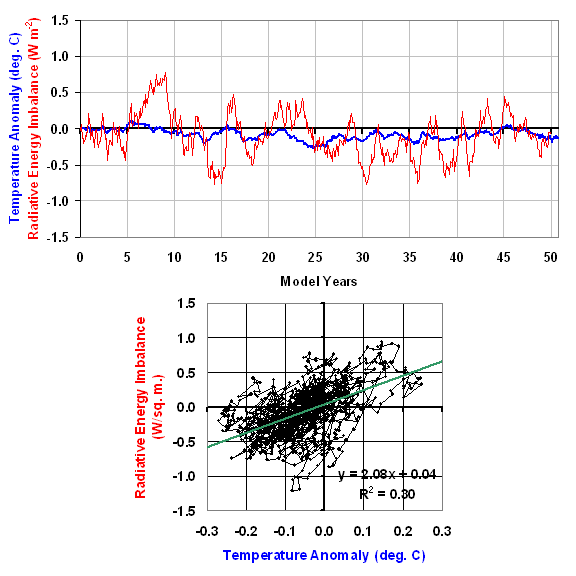In my new book, The Great Global Warming Blunder: How Mother Nature Fooled the World’s Top Climate Scientists, I show the results of experiments with a simple climate model that runs in an Excel spreadsheet. The model is meant to illustrate how natural monthly-to-yearly variability in global (a) cloud cover and (b) surface evaporation can affect our satellite observations of (1) temperature and (2) total radiative flux.
Those last two measurements are what are traditionally used to determine the temperature “sensitivity” of our climate system. By specifying that sensitivity (with a total feedback parameter) in the model, one can see how an analysis of simulated satellite data will yield observations that routinely suggest a more sensitive climate system (lower feedback parameter) than was actually specified in the model run.
And if our climate system generates the illusion that it is sensitive, climate modelers will develop models that are also sensitive, and the more sensitive the climate model, the more global warming it will predict from adding greenhouse gasses to the atmosphere.
Here is the model to download. It is currently set up to do a 100 50 year simulation at monthly daily time resolution. Here are two example plots from the model, run with a 50 meter deep ocean and a feedback parameter of 3 Watts per sq. meter per deg. C…but the output of the model suggests a feedback of 2.08, rather than 3:

The 4 basic inputs to the model are in large blue font, all of which are adjustable. These include (in no particular order):
1) Bulk heat capacity of the system, specified as an equivalent ocean water depth (nominally 50 meters deep).
2) Net feedback parameter (controlling the model’s temperature sensitivity to energy imbalances)
3) Radiative forcing (e.g. from natural variations in cloud cover)
4) Non-radiative forcing (from fluctuations in convective heat transfer between the surface and atmosphere)
Those last 2 heat flux forcings are driven by a random number generator. The radiative forcing also has a low-pass filter applied to the monthly random numbers, which seems to mimic the satellite observations pretty well.
In addition to these 4 inputs, one can also “turn on” carbon dioxide forcing, which will lead to a long-term warming trend in the model at a rate that depends mainly upon the specified feedback parameter and ocean depth.
NOTES:
(1) After running the model many times, eventually the memory cache used by Excel gets filled up (I think), and garbage numbers start to appear. Just close out Excel and re-open it to fix this.
(2) A new model run is automatically made any time ANY entry in the spreadsheet is changed, including when you do a file “Save”. So if you want to show someone the results of a specific model run, you are going to have to copy and “special paste” the values somewhere else, and then make a new graphs from those.

 Home/Blog
Home/Blog



